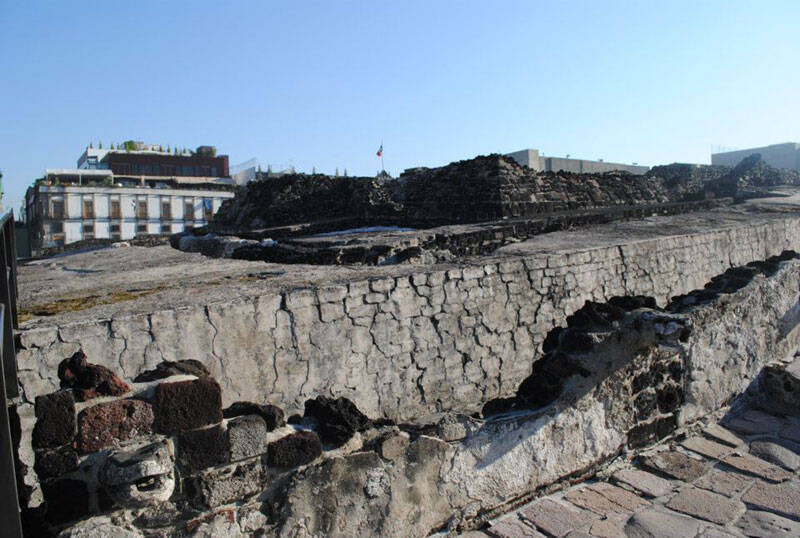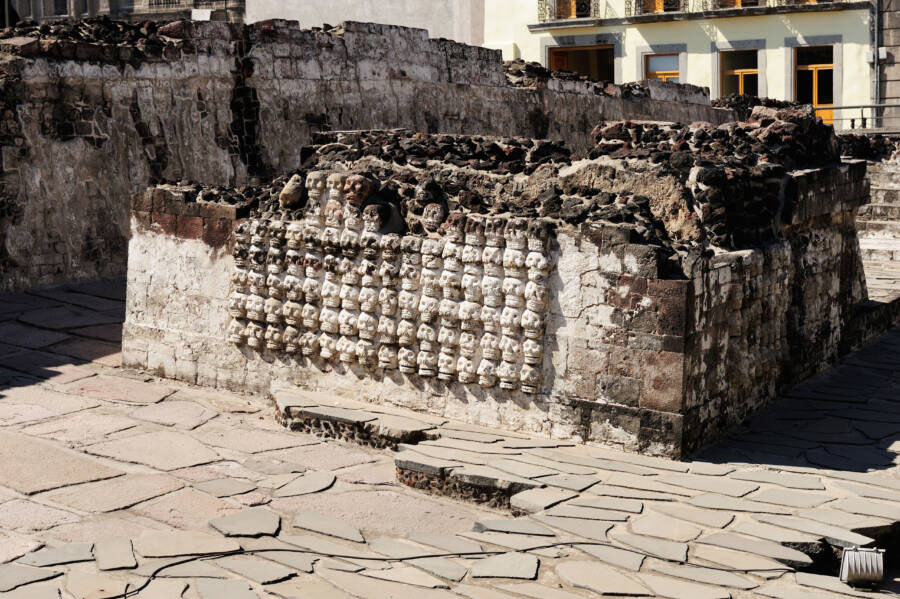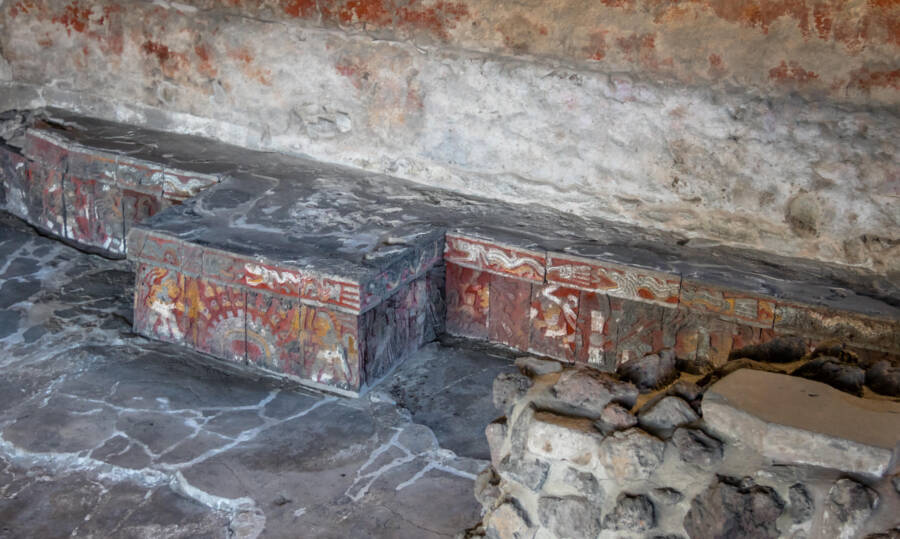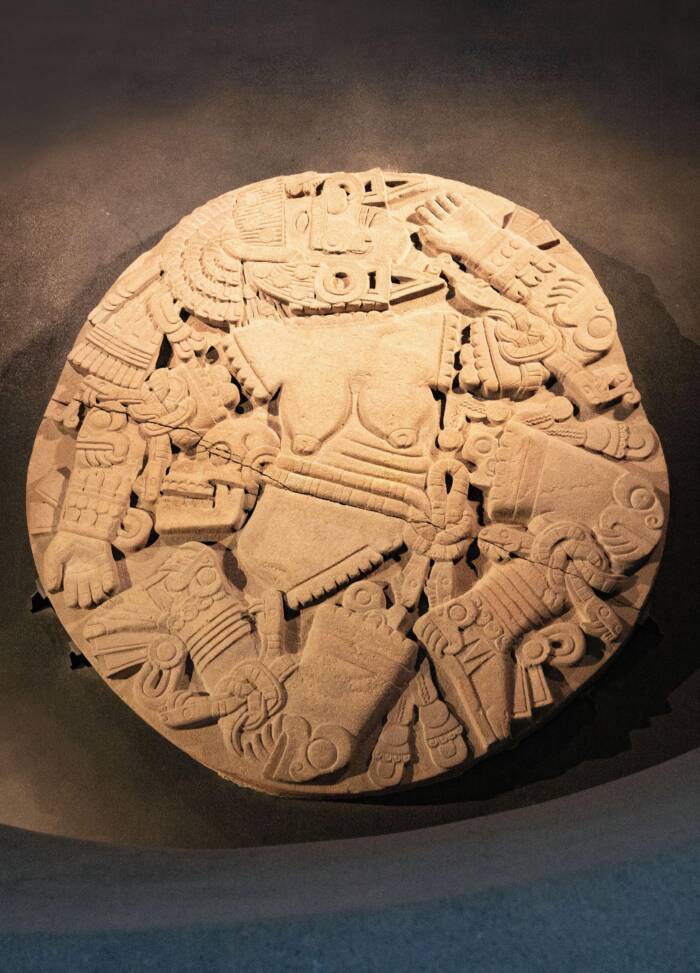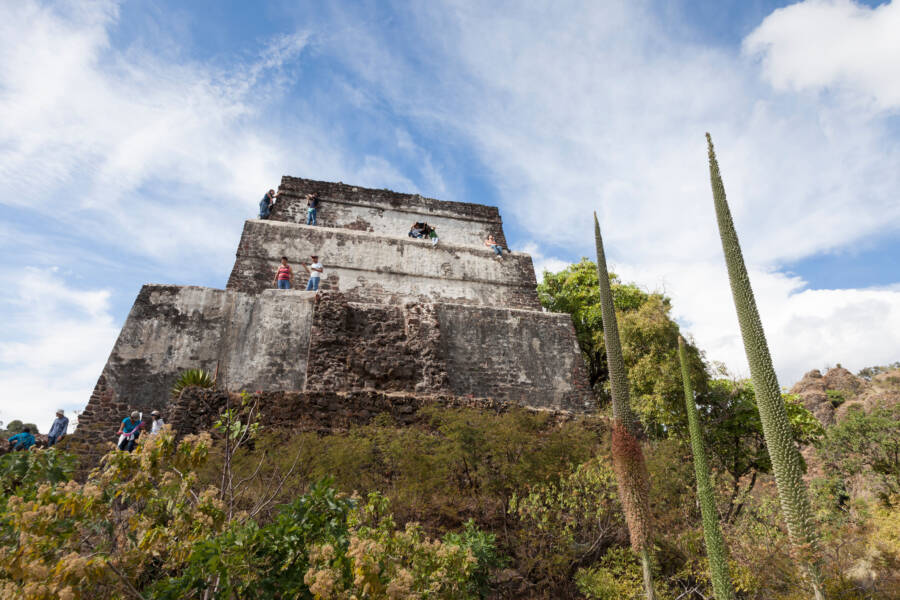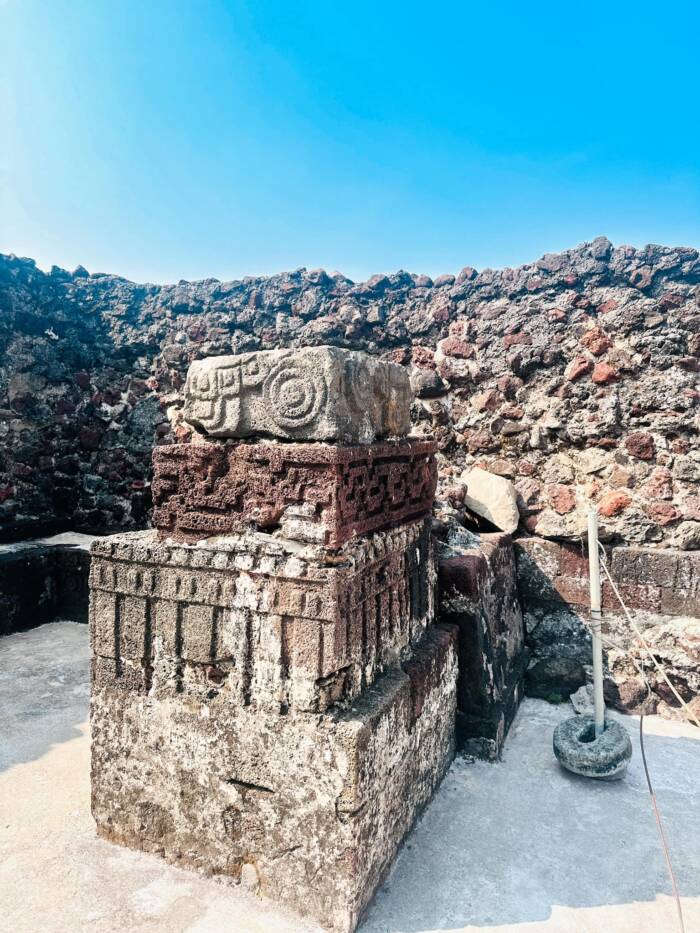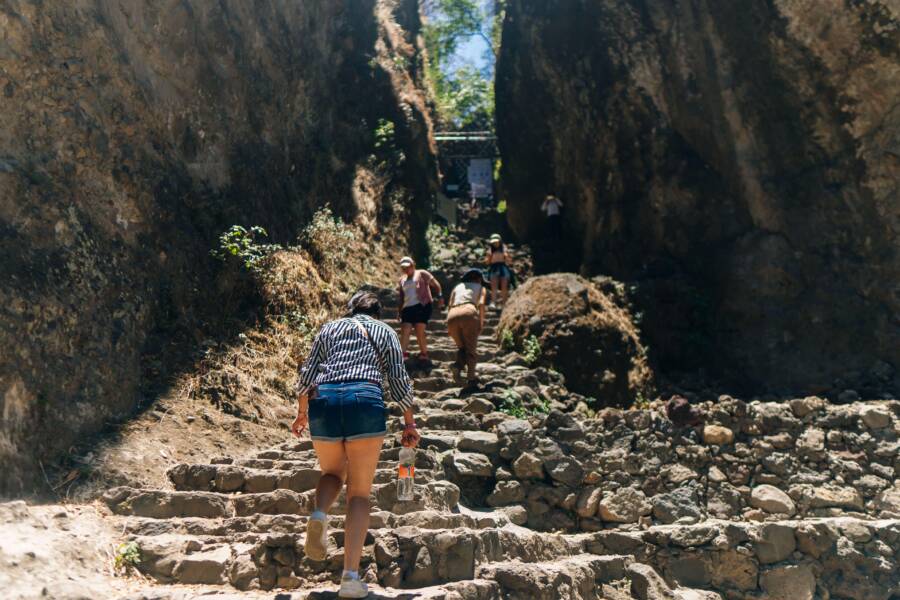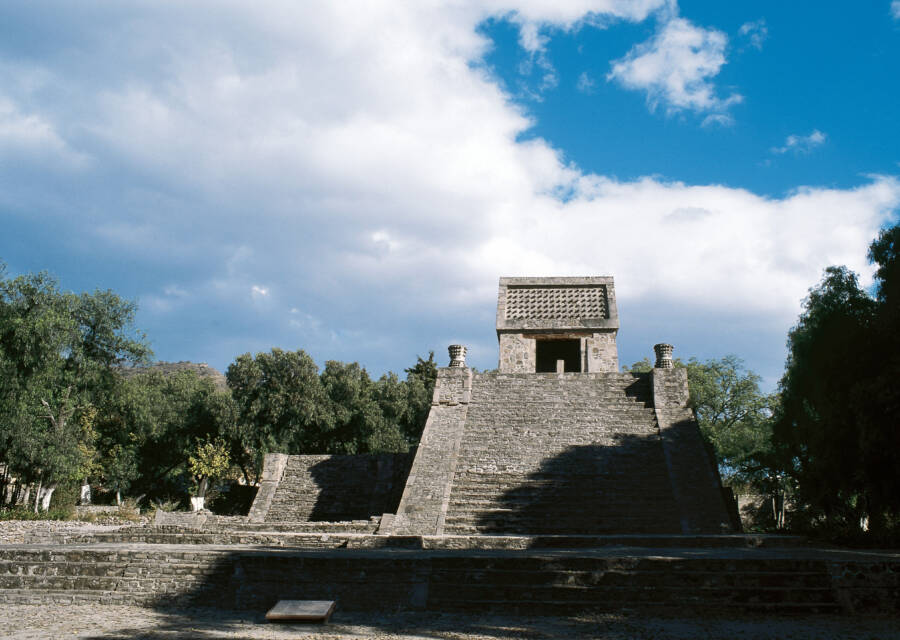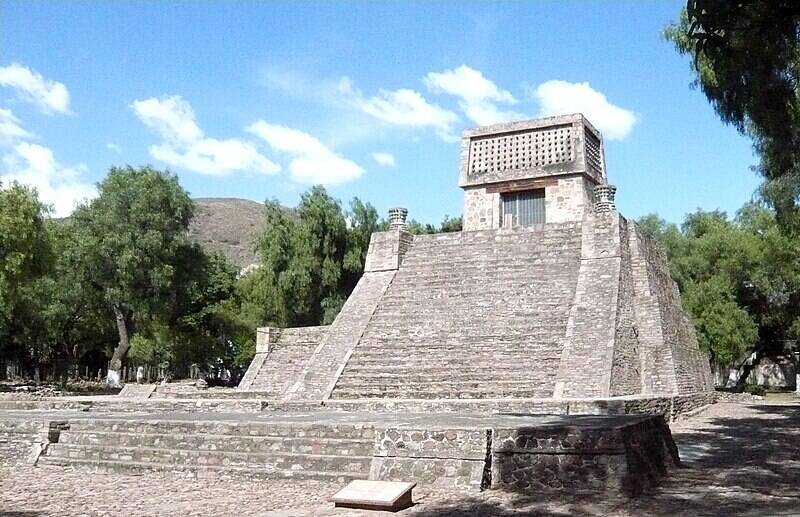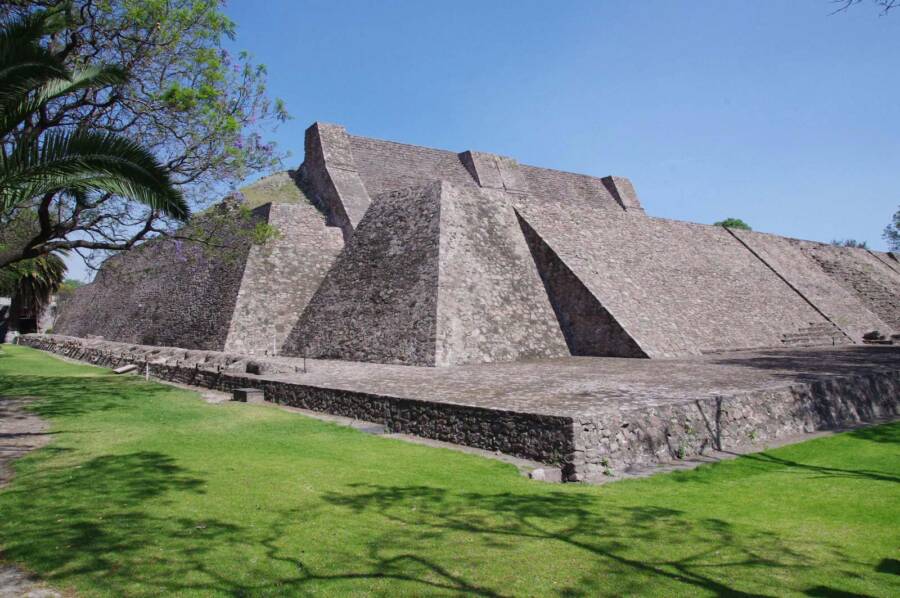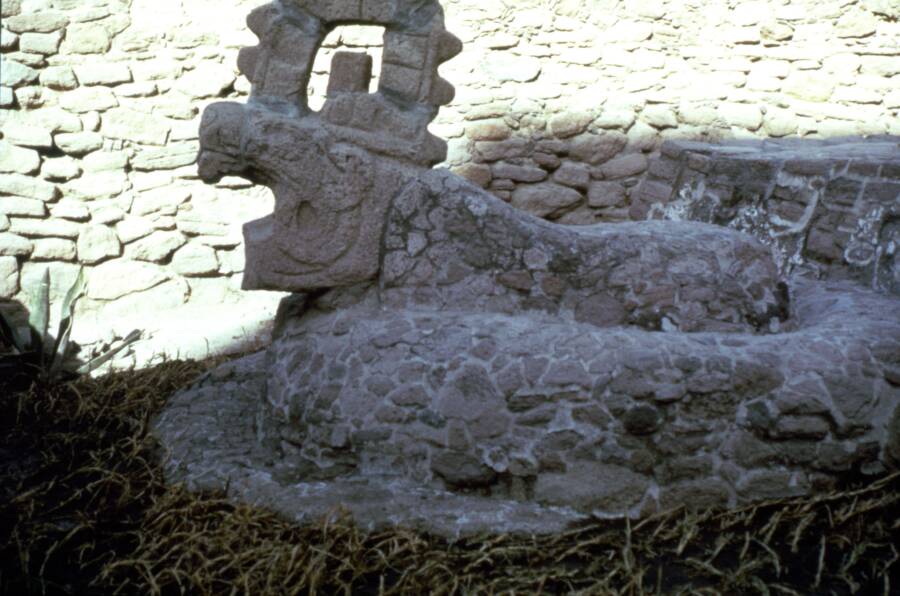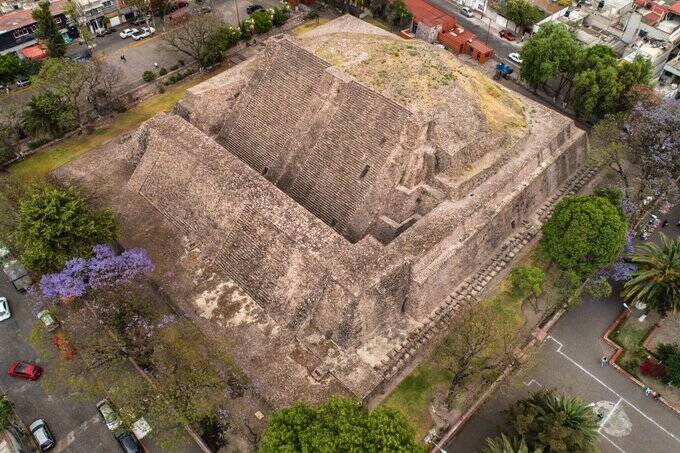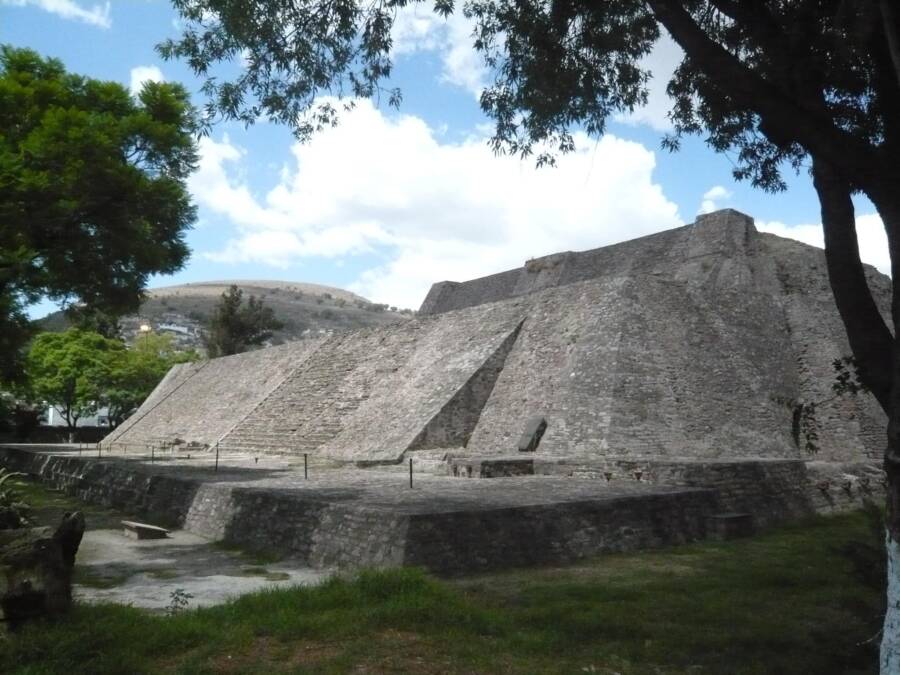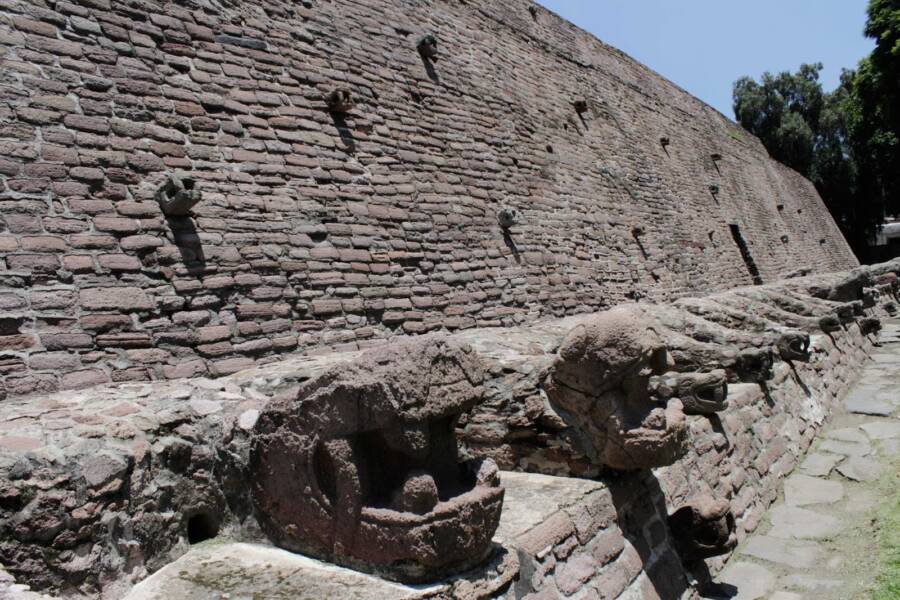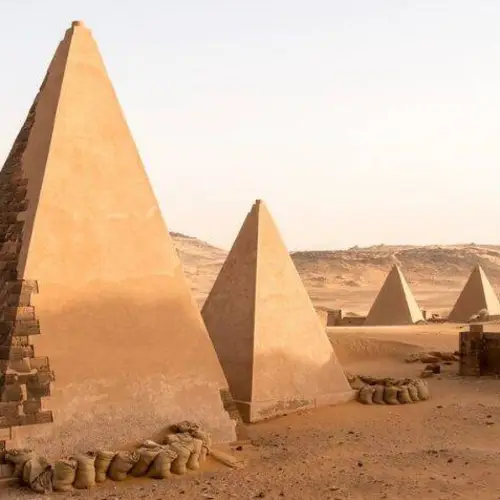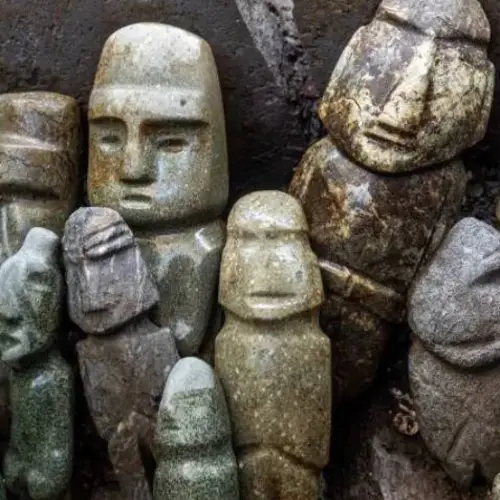From Templo Mayor in Mexico City to the Acatitlan temple in Santa Cecilia, these pyramids are marvels of Mesoamerican architecture.
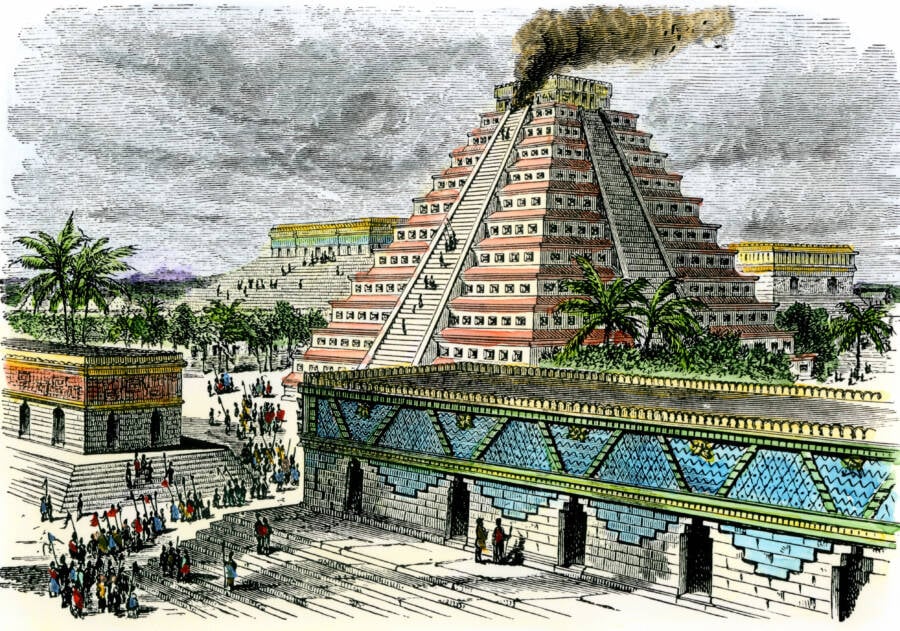
North Wind Picture Archives / Alamy Stock PhotoAn illustration of an Aztec pyramid.
Mesoamerican pyramids have long intrigued historians of North, Central, and South America. This region has been a hotbed for Pre-Columbian temples, including the Mayan El Castillo and the Great Pyramid of Cholula, the largest pyramid in the world by volume. And while they’re not as widely recognized, Aztec pyramids are just as intriguing.
From the Templo Mayor in the heart of the Aztec Empire in Tenochtitlan to El Tepozteco, the temple of alcohol, these four pyramids in Mexico are noteworthy examples of the Aztec Empire’s influence and power.
Step back in time and see for yourself.
The Ruins Of The Templo Mayor In The Heart Of The Aztec Empire

Public DomainA Diego Rivera mural of Tenochtitlan, with the Templo Mayor in the background.
In 1978, construction workers digging in downtown Mexico City stumbled upon something incredible: a carved monolith depicting a decapitated and dismembered female figure. Researchers identified the figure as that of the Aztec goddess Coyolxauhqui. Soon, further excavations unearthed the ruins of a massive temple dating back to the 14th century.
Built in seven phases between 1325 and 1519, the Templo Mayor once served as the center of the Aztec Empire.
Measuring about 200 feet in height and 328 by 262 feet at its base, the structure featured two staircases leading up to twin temples painted blue and red in reference to the rain god Tlaloc and sun god Huitzilopochtli.
The entire capital city of Tenochtitlan revolved around the temple. Indeed, the city was built in four quadrants to mimic the Aztec belief in a four-section universe, with the Templo Mayor as its "axis mundi" — the center of the world.
To appease the gods, the Aztecs would sometimes make human sacrifices at the temples. Executioners would dismember and decapitate the victims on a sacrificial stone before rolling their bodies down the staircases and onto a stone depicting Coyolxauhqui, who died a similarly brutal death in Aztec mythology.
Unfortunately, the Spanish destroyed the Templo Mayor in the early 16th century and used stones from the temple to build cathedrals and other structures. For years, the pyramid lay forgotten, its precise location lost to time until its rediscovery in 1978.
Today, visitors can walk through the ruins of this Aztec pyramid and browse Aztec artifacts from the Templo Mayor Museum.
Santa Cecilia Acatitlan, One Of The Best-Preserved Mesoamerican Pyramids
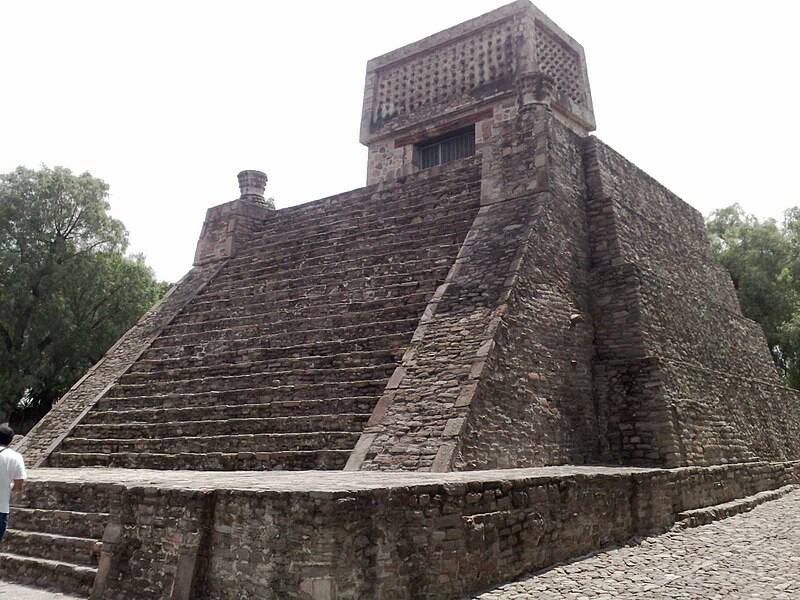
Gunnar Wolf / CC BY-SA 3.0The main staircase of the Santa Cecilia Acatitlan pyramid in Mexico.
About 10 miles north of Mexico City sits the town of Santa Cecilia, home to an early Mesoamerican pyramid called Acatitlan. In its early days, it functioned as a small city-state, or altépetl. While it's not clear who built the original pyramid, by 1425 C.E., it was under Aztec control.
In the heyday of the Aztec Empire, the pyramid would have stood on the wetlands of central Mexico, earning it its name in Nahuatl, which means "the place among the reeds."
Like the Templo Mayor, Acatitlan was likely dedicated to the gods Huitzilopochtli and Tlaloc and would have served as a cultural and spiritual center hundreds of years ago. Evidence from the pyramid shows that it was constructed in eight stages.
When the Spanish arrived in the 16th century, parts of this Mesoamerican pyramid were damaged and destroyed. Colonists took stones from the structure to build new buildings.
As time passed, the pyramid was buried under a layer of dirt, mud, and debris until it was entirely underground. Then, in 1923, archaeologists rediscovered the pyramid. The Federal Directorate of Archaeology, precursor to the National Institute of Anthropology and History (INAH), excavated Acatitlan in the 1960s, and parts of it were reconstructed by architect and archaeologist Eduardo Pelayo Moreno.
Despite being left to rot for hundreds of years, Acatitlan is perhaps the best-preserved Aztec pyramid today.
Tenayuca, The "Town Of Serpents"
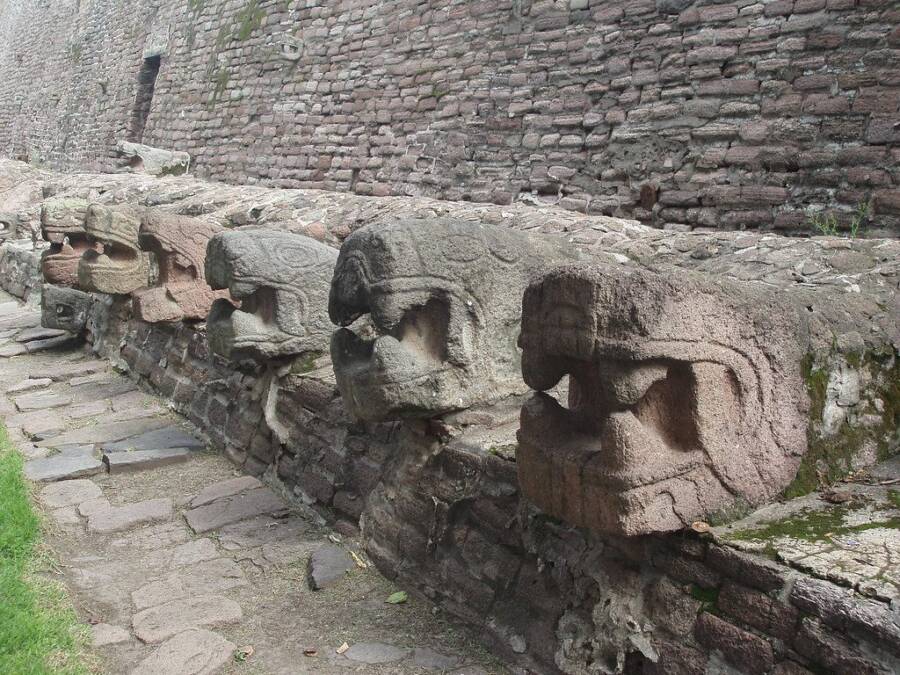
T_Y_L/CC BY-SA 2.0Sculptures of snake heads at the Tenayuca pyramid in Mexico.
Located about eight miles northwest of the Aztec capital of Tenochtitlan, Tenayuca is one of the most famous Aztec pyramids.
Initially, it likely served as a capital city for the Chichimeca, a group of nomadic tribes who settled in the Valley of Mexico. Legend holds that a Chichimeca ruler named Xolotl settled in the area in the 1200s and built the fortified city of Tenayuca, which means "walled place" in Nahuatl. By 1434, the Aztecs had conquered the city.
Built in multiple phases beginning in the 13th century, Tenayuca is one of the earliest examples of the Aztec double pyramid — a single foundation supporting two temples. It likely inspired later examples in Aztec architecture.
This astonishing work of Mesoamerican architecture measures about 200 feet long, 170 feet wide, and 56 feet tall. However, the pyramid is best known for its massive walls carved with about 140 rattlesnakes.
In fact, when the Spanish arrived in the area in the 16th century, the walls made such a strong impression on them that they called Tenayuca the "town of serpents," according to INAH.
Researchers have theorized that the Aztecs added these carvings to pay homage to the serpent walls in the Toltec city of Tula. The Toltecs were another Mesoamerican empire that ruled from 950 to 1150 C.E.
After the Spanish conquered this area in 1520, the temple of Tenayuca was forgotten and covered in layers of dirt and debris. Then, in 1925, archaeologists rediscovered the temple and restored it.
Today, visitors can walk through the temple's ruins and even view the remains of a nearby elite residential complex.
El Tepozteco, The Temple Of Alcohol
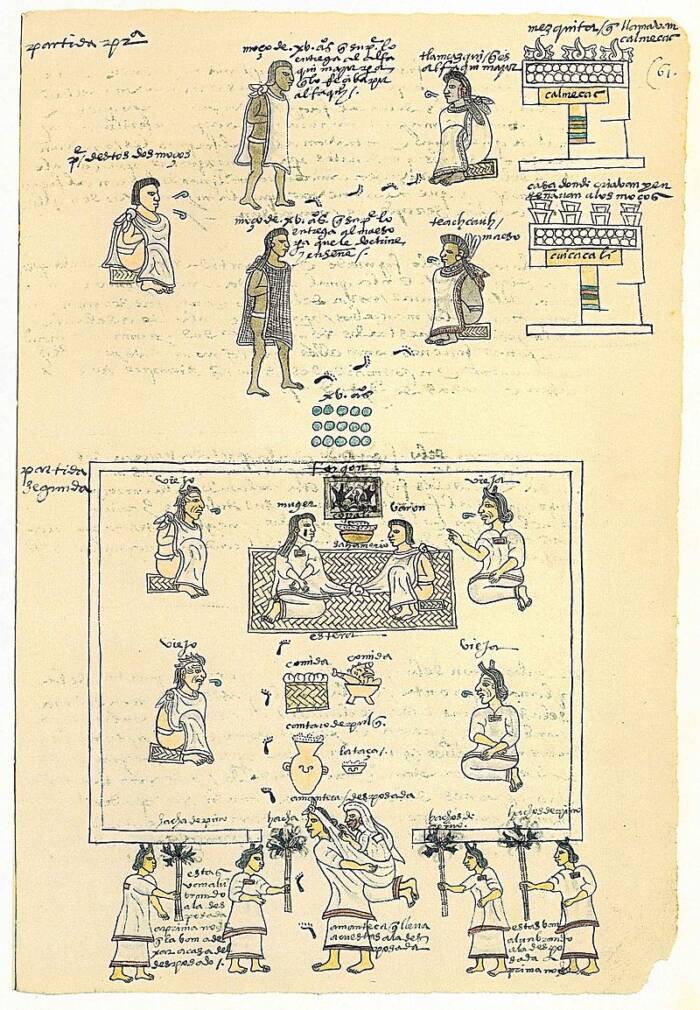
Public DomainAn early 16th-century codex showing Aztecs placing alcoholic pulque in a vessel.
Located over 50 miles south of Mexico City, the temple of El Tepozteco is perhaps the most unique Aztec pyramid. Built sometime during Mexico's Postclassic period (roughly 900 to 1521 C.E.), this Mesoamerican temple sits on a 20-foot-high platform atop a rainforest mountain in Morelos, Mexico.
The Aztecs built the temple to honor Tepoztēcatl, the god of drunkenness and pulque, an alcoholic beverage created from the fermented sap of the agave plant. Aztecs consumed this drink during rituals or presented it to their gods as an offering.
The temple features two rooms. The larger, outer room has an entrance flanked with pillars and opens up to the temple stairs. The smaller interior room likely once held a statue of Tepoztēcatl. Houses for priests and other temple workers surround the pyramid on several terraces built into the mountain.
And although archaeologists are unsure when exactly El Tepozteco was built, the temple leaves behind clues. Writing on stones at the site bears the name of the Emperor Ahuizotl, as well as the calendrical date "10 rabbit," or 1502 C.E.
This Aztec pyramid was abandoned during Spanish conquest in the 16th century. But in its heyday, it was a major cult site, and pilgrims traveled from as far as Guatemala just to worship at El Tepozteco. Today, tourists making the hike up to the Mesoamerican temple can see waterfalls and tropical greenery along their way much like pilgrims would have seen on their own journeys hundreds of years ago.
After reading about the Aztec pyramids, dive into the murky history of the Aztec death whistle. Then, read about Huitzilopochtli, the Aztec sun and war god.


